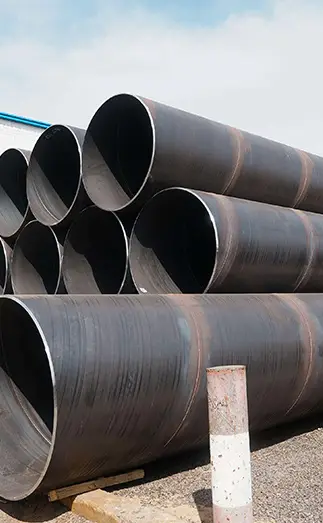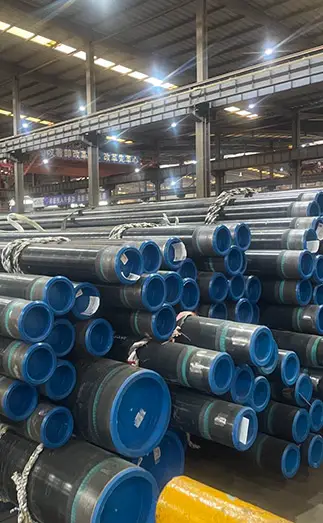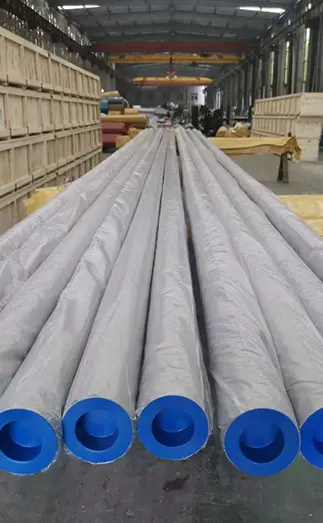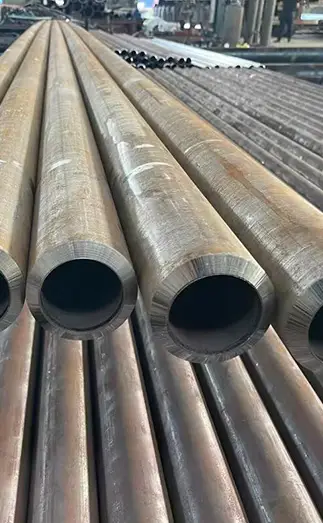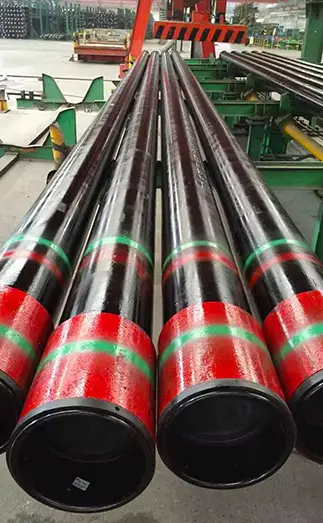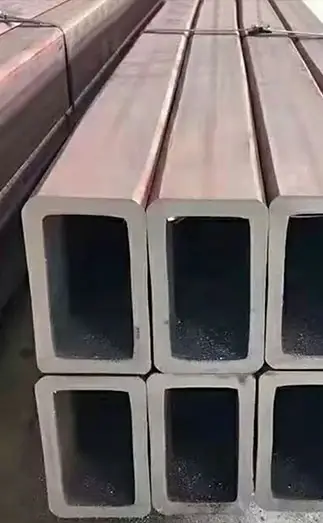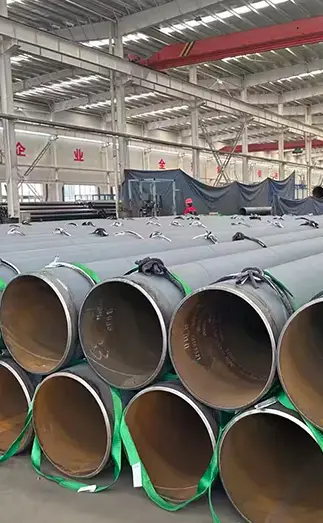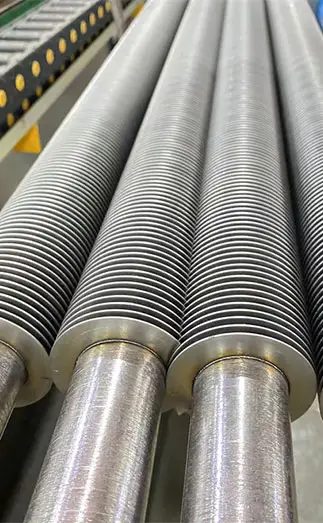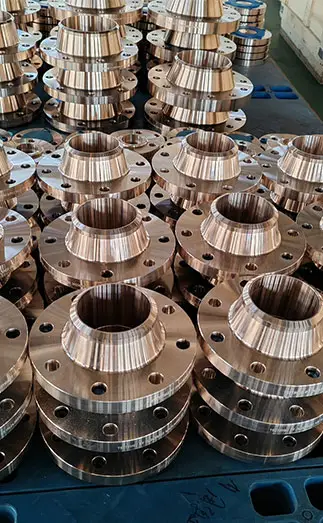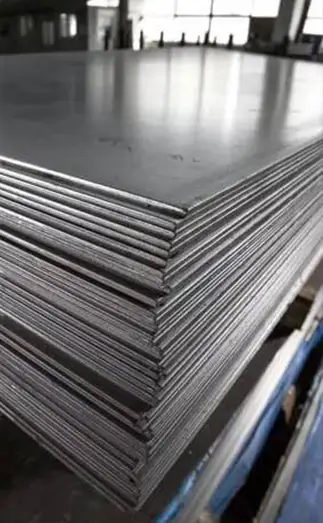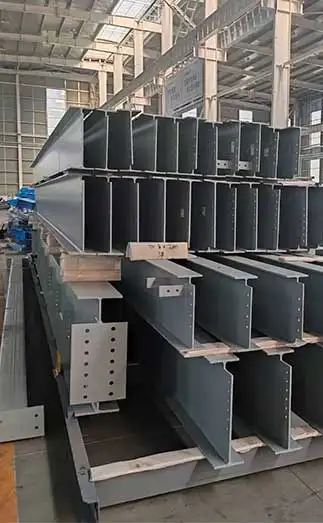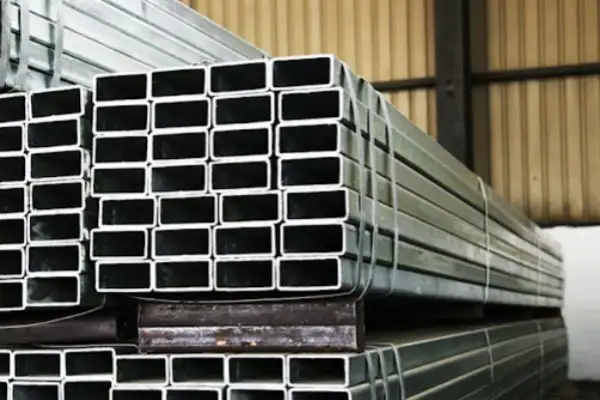Quenching is a heat treatment process used to enhance the mechanical properties of steel, including straight seam welded pipes. It involves heating the steel to a specific temperature (often above its critical point) and then rapidly cooling it, typically by immersion in water, oil, or air. The process alters the microstructure of the material, improving hardness and strength. Below is an overview of the quenching technology applied to straight seam welded pipes.
1. Purpose of Quenching in Straight Seam Welded Pipes
Increase Hardness and Strength: The primary goal of quenching is to increase the hardness and tensile strength of the steel pipe. It helps the pipe withstand higher pressure, wear, and external stresses.
Improve Mechanical Properties: Quenching can improve the yield strength and fatigue resistance, making it suitable for harsh operating conditions like high-temperature or high-pressure environments.
Refine Microstructure: Quenching transforms the steel microstructure into martensite, which enhances hardness and strength.
2. Steps in the Quenching Process for Straight Seam Welded Pipes
Heating: The steel pipe is heated to a temperature above its critical point, typically between 850°C and 1000°C, depending on the steel grade and desired properties.
Holding Time: The pipe is held at the desired temperature for a specified amount of time to ensure uniform heating throughout the pipe's cross-section.
Quenching (Rapid Cooling): The heated steel pipe is rapidly cooled by immersion in a quenching medium. The medium can be:
Water: Provides fast cooling, resulting in a higher hardness but can cause cracking or distortion if not controlled.
Oil: Offers slower cooling than water, reducing the risk of cracking but still significantly increasing hardness.
Air: Air quenching is less aggressive and may be used for pipes with thicker walls to avoid deformation.
Post-Quenching Treatment: After quenching, the pipe may undergo tempering or stress relief processes to reduce brittleness and improve toughness.
3. Types of Quenching
Continuous Quenching: This method involves the continuous immersion of the steel pipe in the quenching medium after heating. It is often used for smaller or thinner pipes where uniform cooling can be achieved quickly.
Batch Quenching: In this method, a batch of pipes is heated to the required temperature and then quenched in a batch. This is used when treating larger pipes or batches of different sizes and is more suitable for industrial-scale production.
4. Factors Influencing the Quenching Process
Steel Composition: Different alloying elements (carbon, manganese, chromium, etc.) affect the quenching response. For example, higher carbon content results in a more significant hardening effect.
Wall Thickness: Thicker pipes may require slower quenching methods to avoid internal stresses, cracking, or distortion.
Quenching Medium: The choice of water, oil, or air will determine the cooling rate and thus the hardness of the final product.
Temperature and Time Control: The heating temperature and the duration of both the heating and cooling processes must be controlled precisely to achieve the desired mechanical properties and avoid defects such as warping.
5. Advantages of Quenching Straight Seam Welded Pipes
Increased Strength and Hardness: The primary benefit of quenching is the increased strength and hardness of the steel pipe, which is essential for demanding applications like pressure pipelines, structural elements, and machinery parts.
Improved Wear Resistance: Quenching makes the pipe more resistant to wear and tear, extending its service life.
Enhanced Fatigue Resistance: Quenching improves the pipe's ability to withstand repeated stress and fatigue.
6. Challenges and Considerations
Cracking and Distortion: Rapid cooling, particularly with water, can lead to cracking, especially in pipes with high carbon content or uneven wall thickness. The cooling rate must be carefully controlled.
Residual Stresses: Quenching can introduce internal stresses in the steel, potentially leading to deformation or dimensional instability. Post-quenching treatments like tempering or stress relieving are often required.
Energy Consumption: Quenching can be energy-intensive, especially in large-scale production, as maintaining the required temperature levels and controlling cooling rates is crucial.
7. Post-Quenching Treatments
After the quenching process, the steel pipe may undergo further heat treatments to improve its mechanical properties and reduce brittleness:
Tempering: Involves reheating the quenched steel to a lower temperature (around 300°C to 700°C) to reduce hardness and increase toughness, making the material less brittle.
Stress Relieving: This treatment helps reduce residual stresses from the quenching process by heating the steel to a temperature below its critical point and allowing it to cool slowly.
Normalizing: A form of heat treatment where the pipe is heated to a temperature above the critical point and then air-cooled to refine the grain structure and enhance toughness.
8. Applications of Quenched Straight Seam Welded Pipes
Oil and Gas Pipelines: Straight seam welded pipes used in the oil and gas industry benefit from quenching to ensure they can withstand high pressure and abrasive conditions.
Water and Sewer Pipelines: Quenching improves the corrosion resistance and strength of pipes used in water distribution and sewage systems.
Construction and Structural Steel: Pipes used in construction, including for scaffolding or framework, are quenched to increase their load-bearing capacity and resistance to external forces.



 English
English Español
Español Français
Français بالعربية
بالعربية